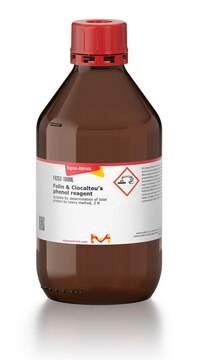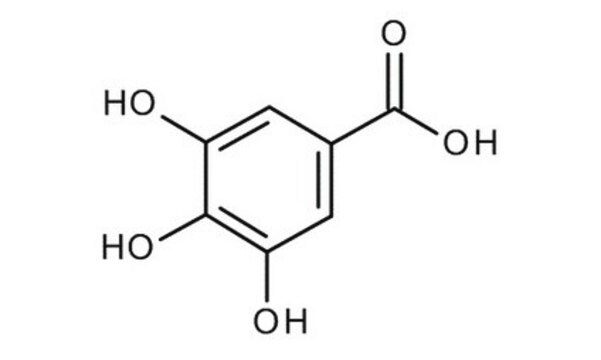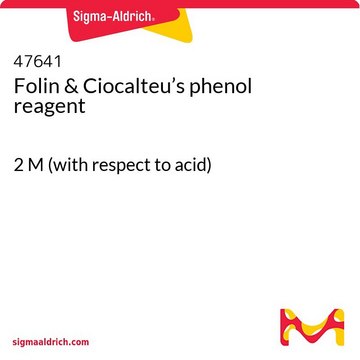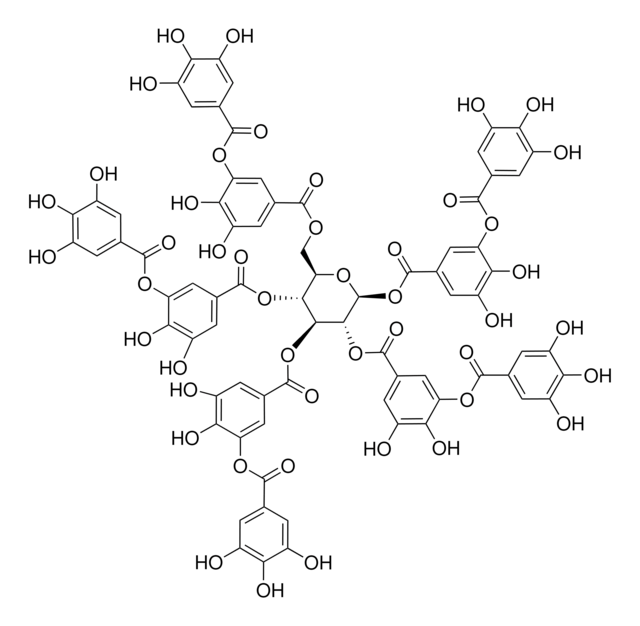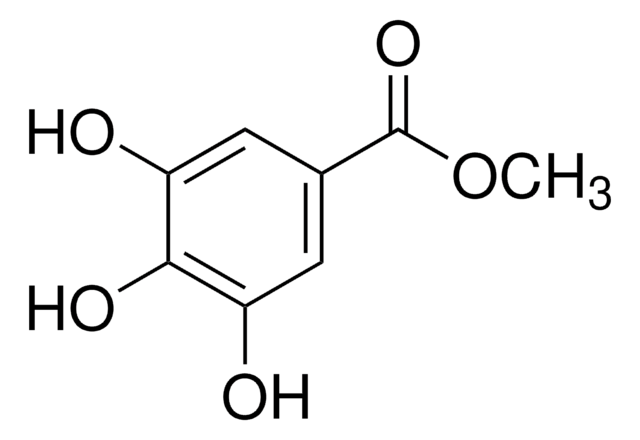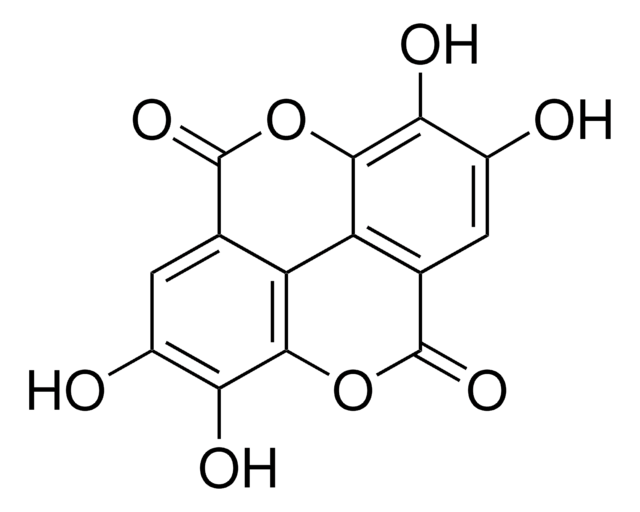G7384
Gallic acid
97.5-102.5% (titration)
Synonym(s):
3,4,5-Trihydroxybenzoic acid
About This Item
Recommended Products
biological source
plant fruit
Quality Level
Assay
97.5-102.5% (titration)
form
powder
technique(s)
HPLC: suitable
color
white to beige
mp
251 °C (dec.) (lit.)
solubility
ethanol: 50 mg/mL, clear to slightly hazy, colorless to faintly yellow
suitability
suitable for UV spectrophotometry and general use
suitable for absorption spectrum analysis
application(s)
agriculture
metabolomics
microbiology
vitamins, nutraceuticals, and natural products
vitamins, nutraceuticals, and natural products
SMILES string
OC(=O)c1cc(O)c(O)c(O)c1
InChI
1S/C7H6O5/c8-4-1-3(7(11)12)2-5(9)6(4)10/h1-2,8-10H,(H,11,12)
InChI key
LNTHITQWFMADLM-UHFFFAOYSA-N
Looking for similar products? Visit Product Comparison Guide
Related Categories
General description
Application
- as a standard for the quantification of extractable phenolics by external calibration
- as a standard to determine the total tannin content of oak root powder using the Folin-Ciocalteu method
- as a phenolic acid to study it′s in vitro antiviral, antibacterial, cytotoxicity and antifungal activities
Biochem/physiol Actions
Features and Benefits
- High quality compound suitable for multiple research applications
- Compatible with HPLC and mass spectrometry techniques
Other Notes
Signal Word
Warning
Hazard Statements
Precautionary Statements
Hazard Classifications
Eye Irrit. 2 - Skin Irrit. 2 - STOT SE 3
Target Organs
Respiratory system
Storage Class Code
11 - Combustible Solids
WGK
WGK 1
Flash Point(F)
Not applicable
Flash Point(C)
Not applicable
Personal Protective Equipment
Certificates of Analysis (COA)
Search for Certificates of Analysis (COA) by entering the products Lot/Batch Number. Lot and Batch Numbers can be found on a product’s label following the words ‘Lot’ or ‘Batch’.
Already Own This Product?
Find documentation for the products that you have recently purchased in the Document Library.
Customers Also Viewed
Protocols
HPLC Analysis of Polyphenols in Nero d'Avola Red Wine on Discovery® HS C18 (UV 280 nm)
Coumaric acid; Quercitrin; Myricetin; Quercetin
Our team of scientists has experience in all areas of research including Life Science, Material Science, Chemical Synthesis, Chromatography, Analytical and many others.
Contact Technical Service
